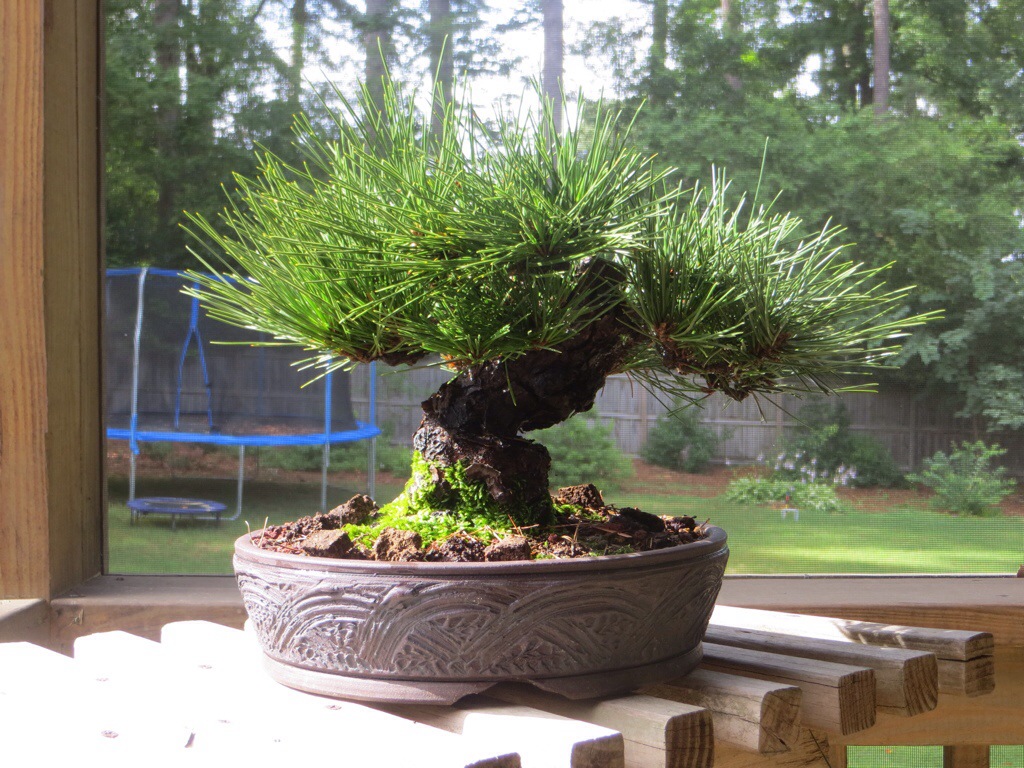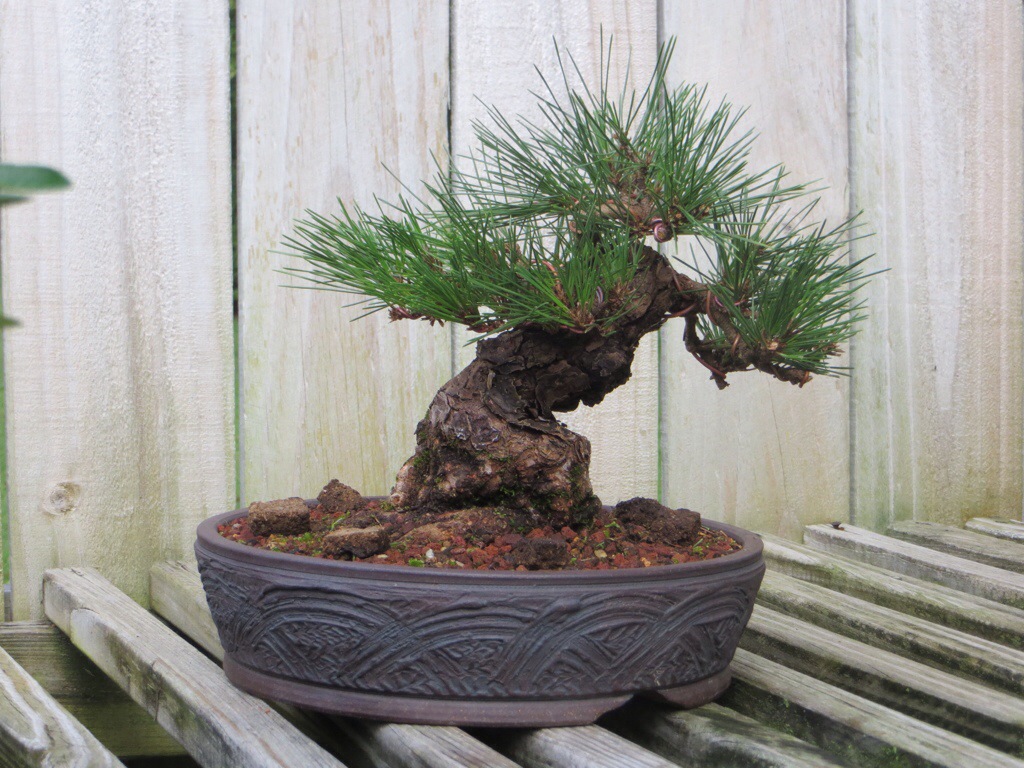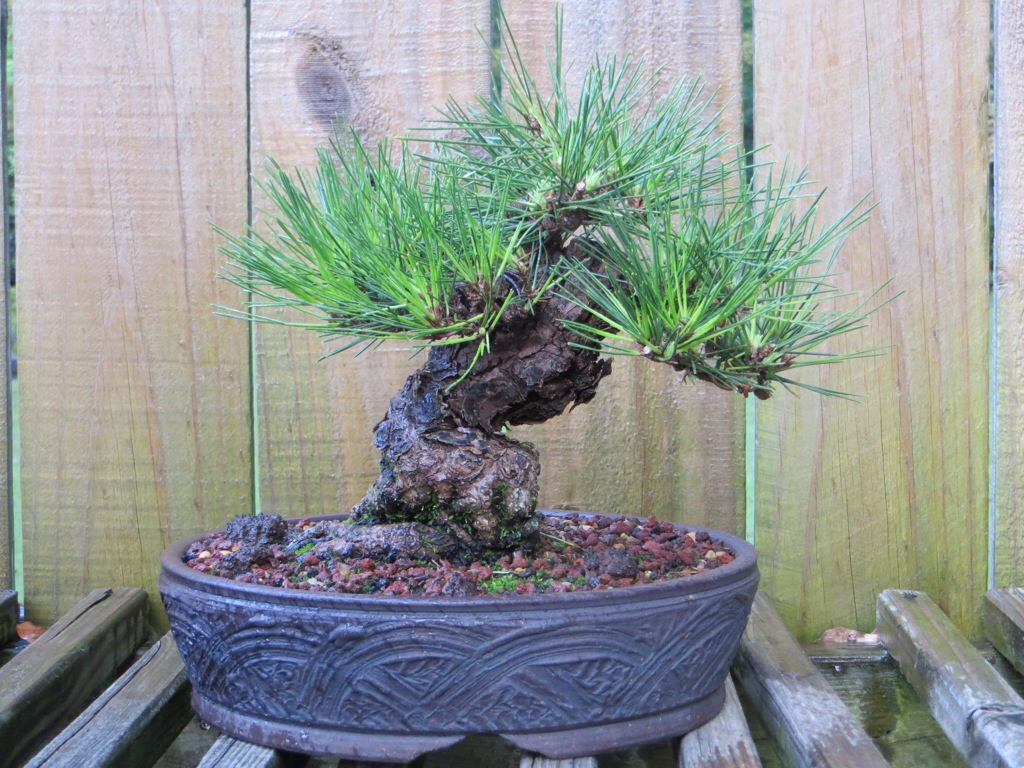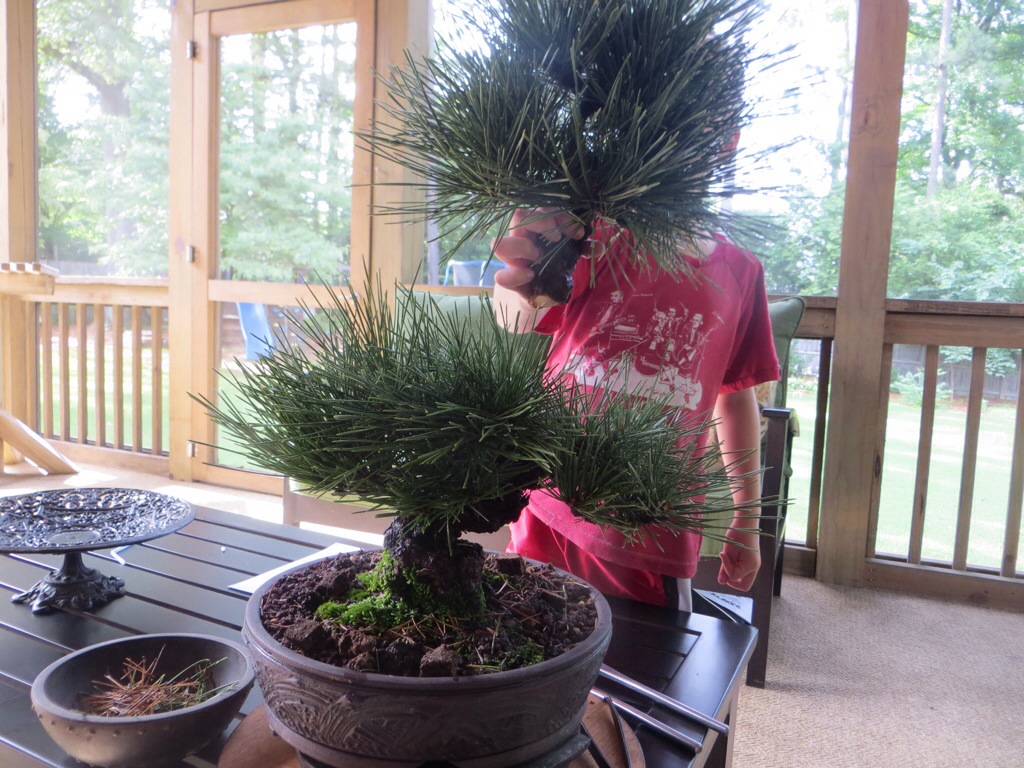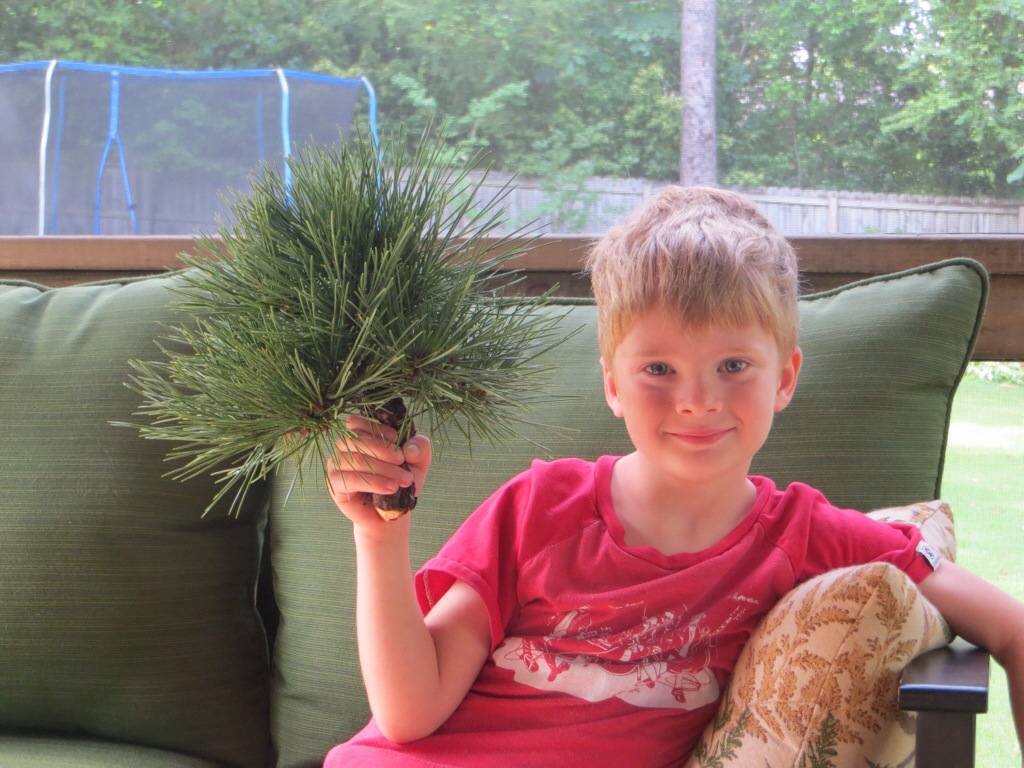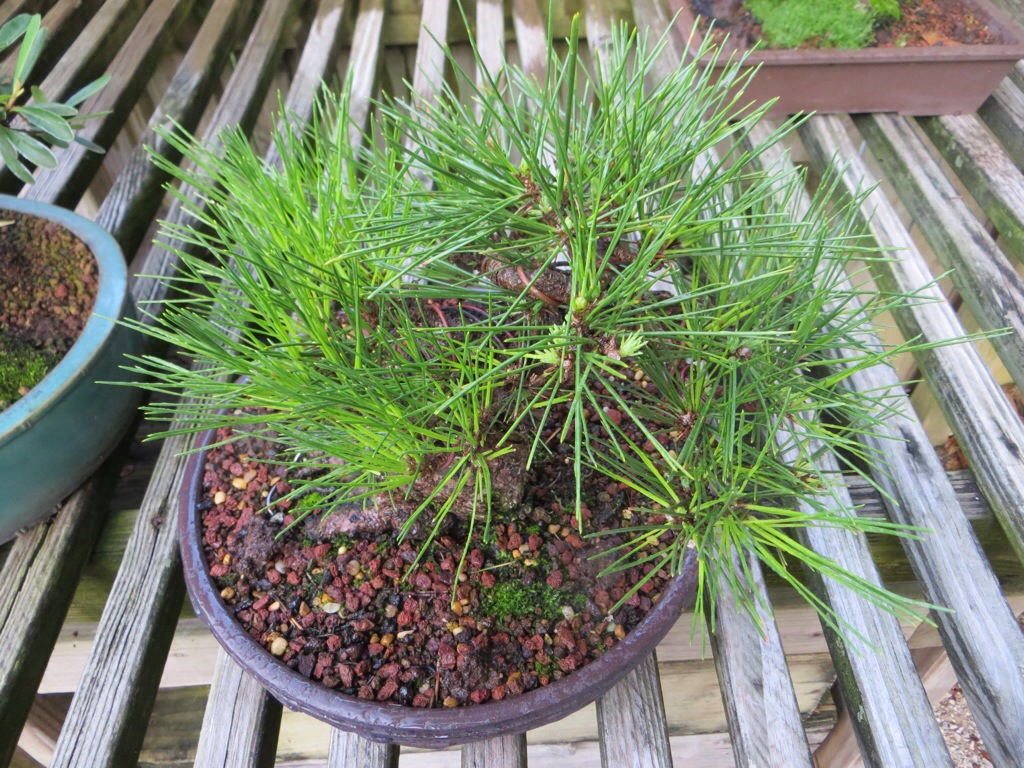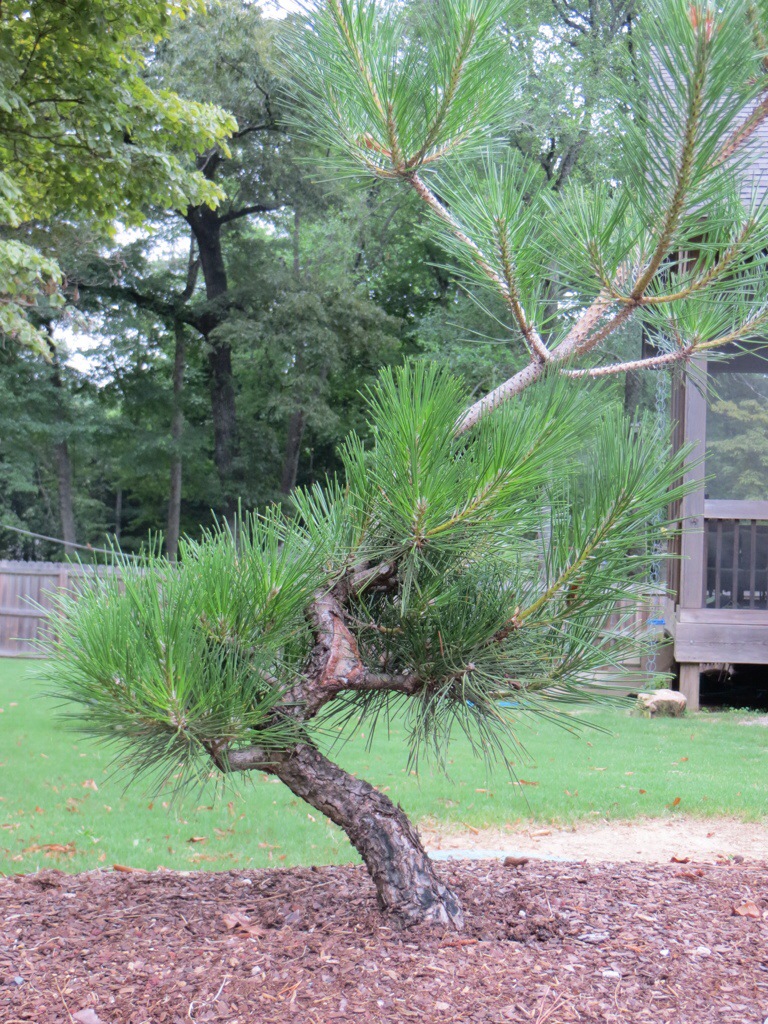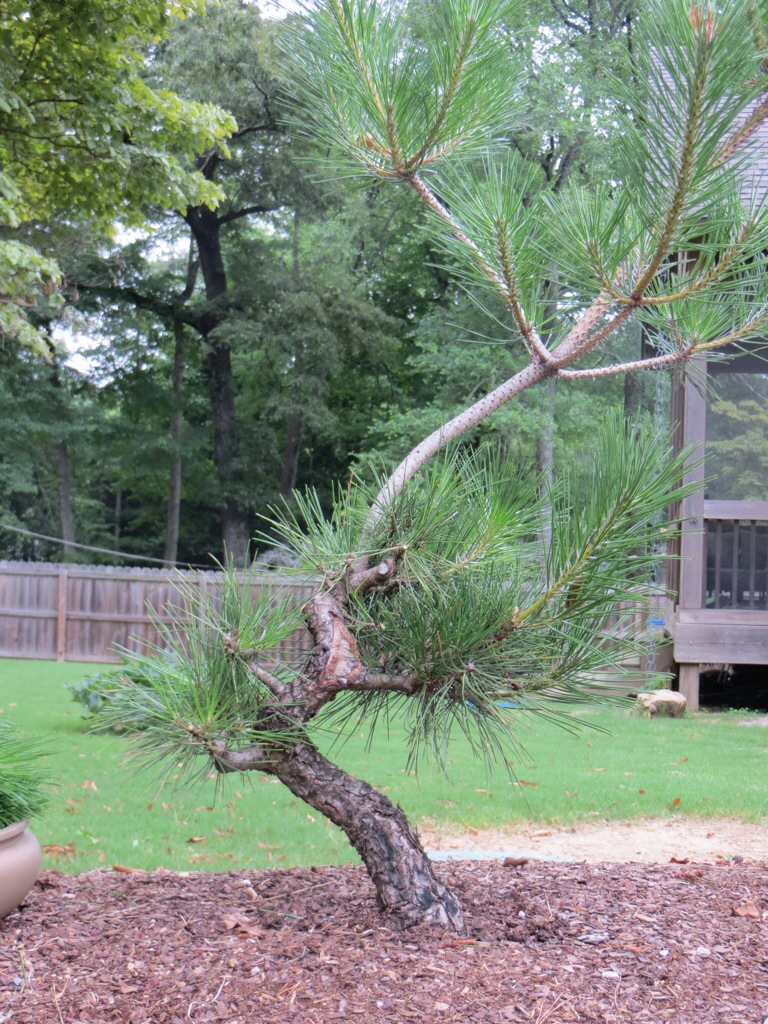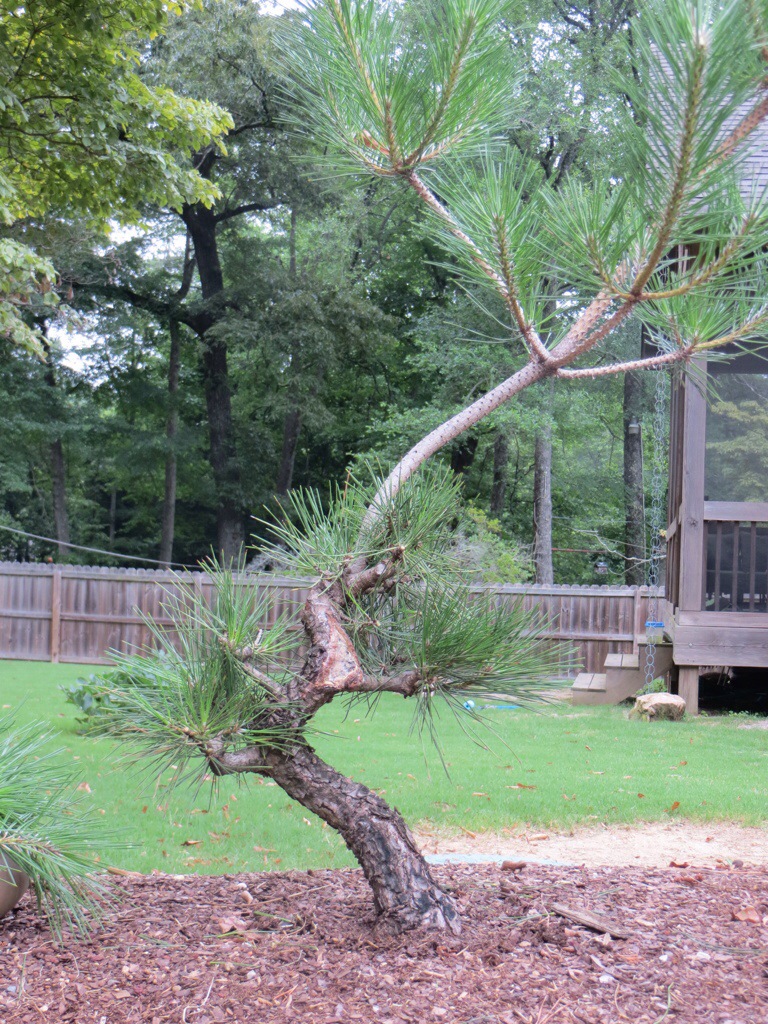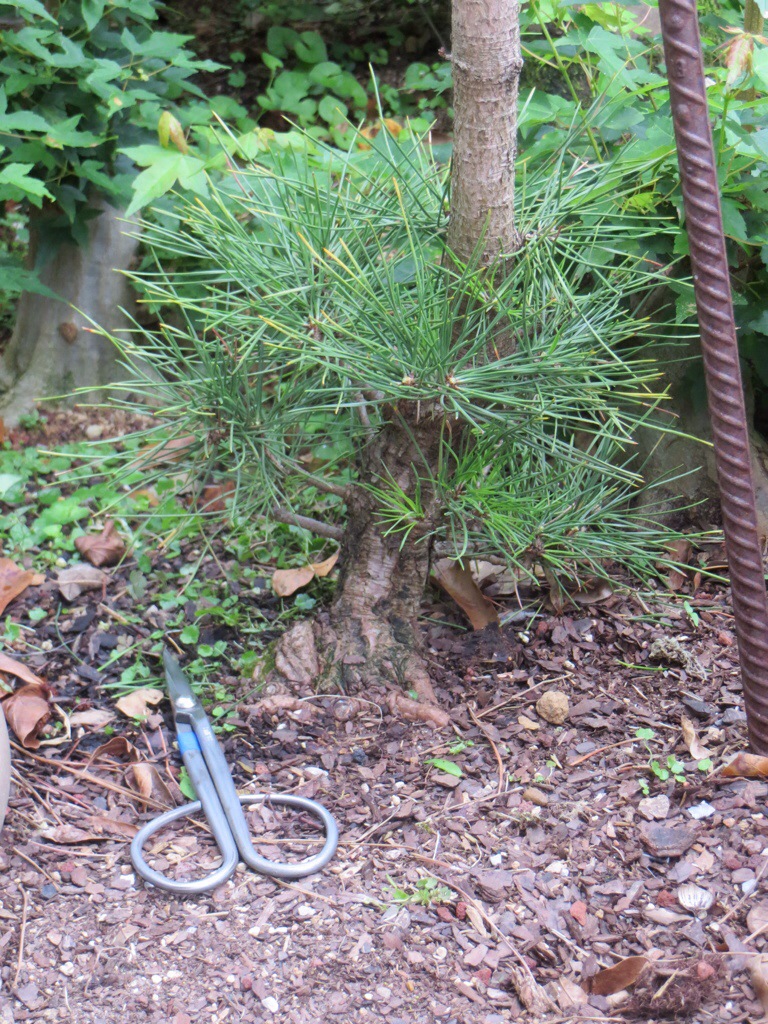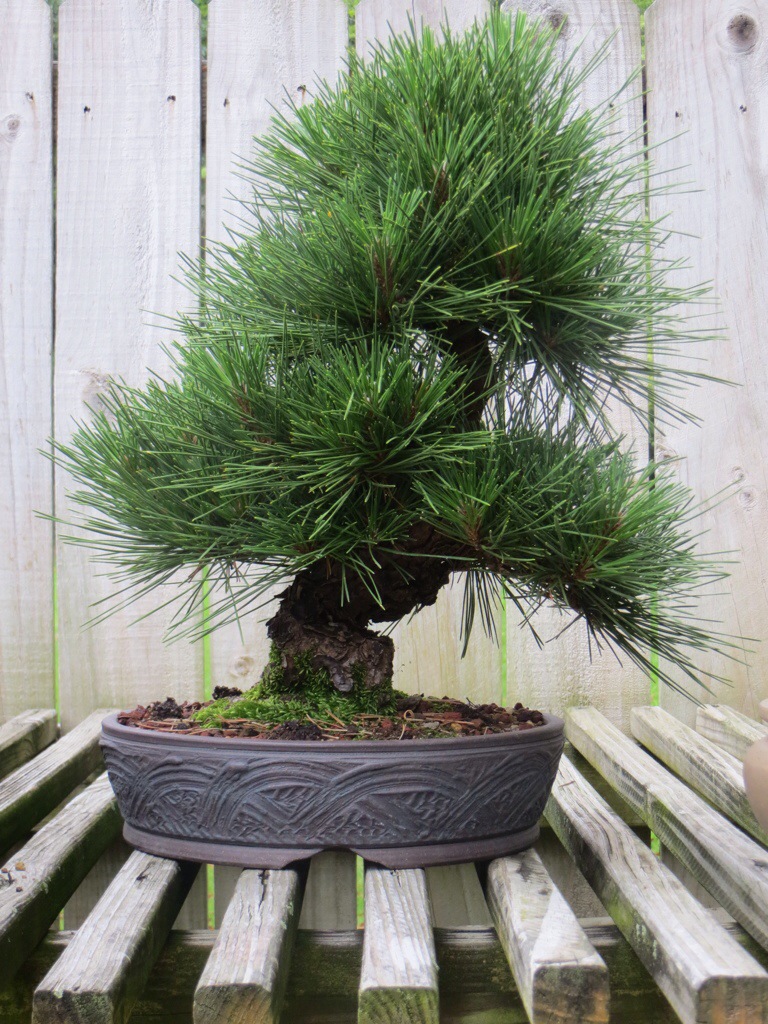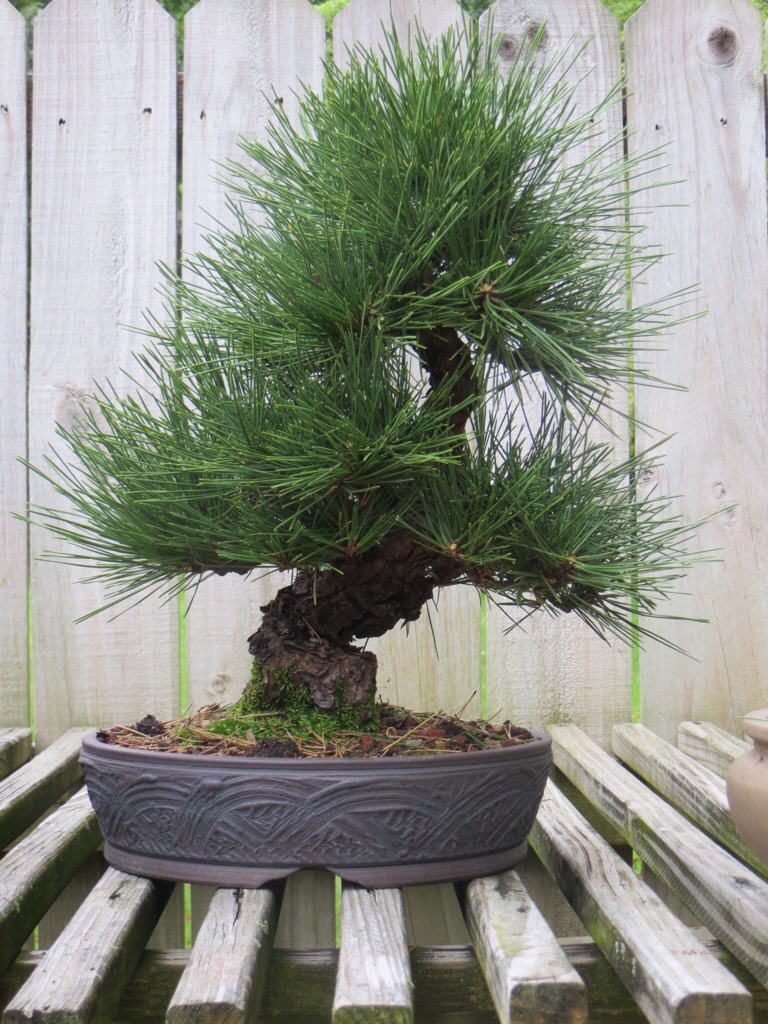This corkbark black pine is a cultivar called Hachi Gen. It develops the tortoise shell bark, not the wings and fissures more commonly seen. Brent Walston propagated this tree as a cutting, so it’s on its own roots and after a few years of considering it, I finally decided to try layering it in March, ’13. Here it is in late summer ’12, where the section of trunk without any branches is visible. Many thought the lower section would make a great shohin, I actually think the top would be equally good…if only it will root.
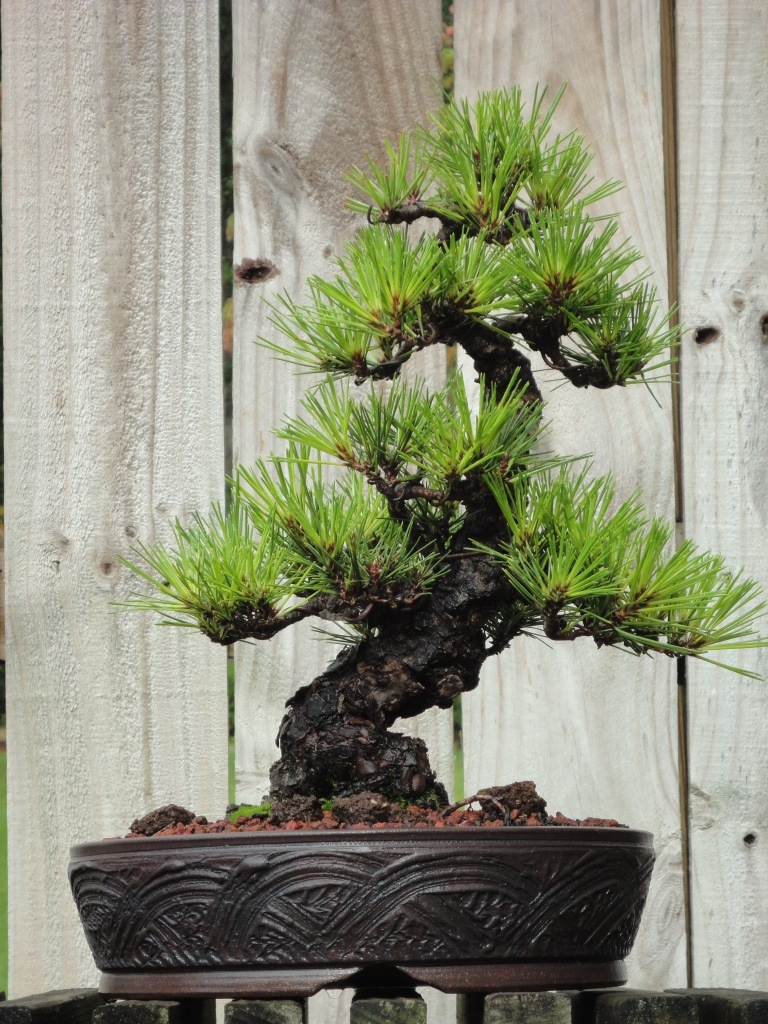
March ’13:
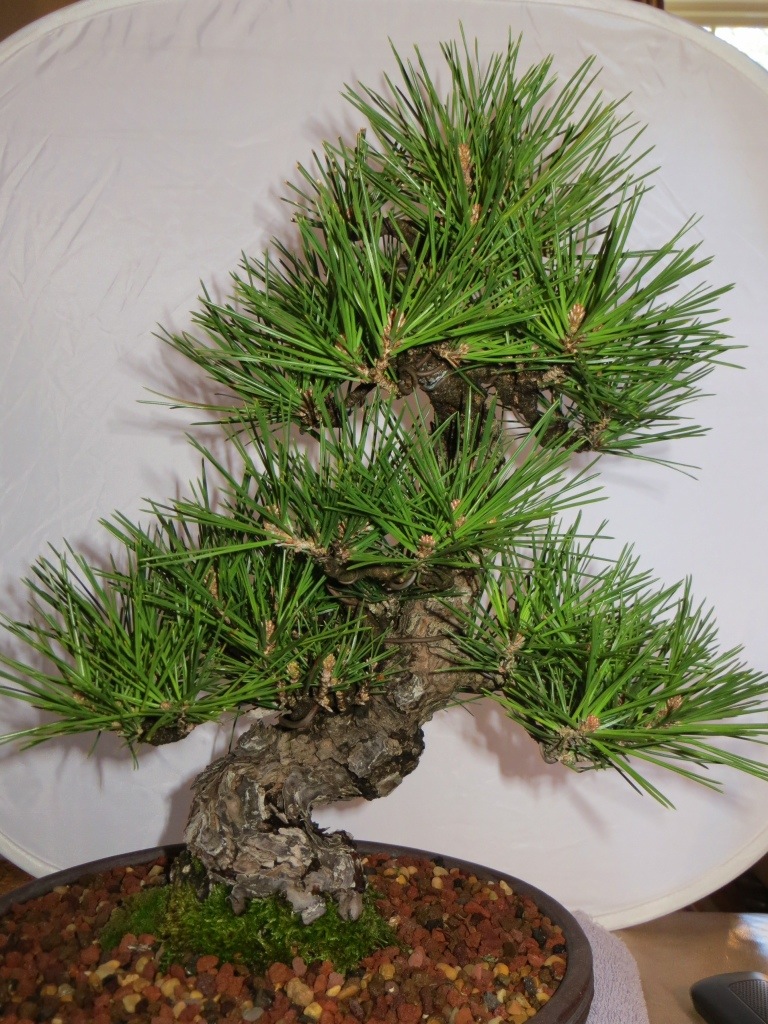
The area to layer:
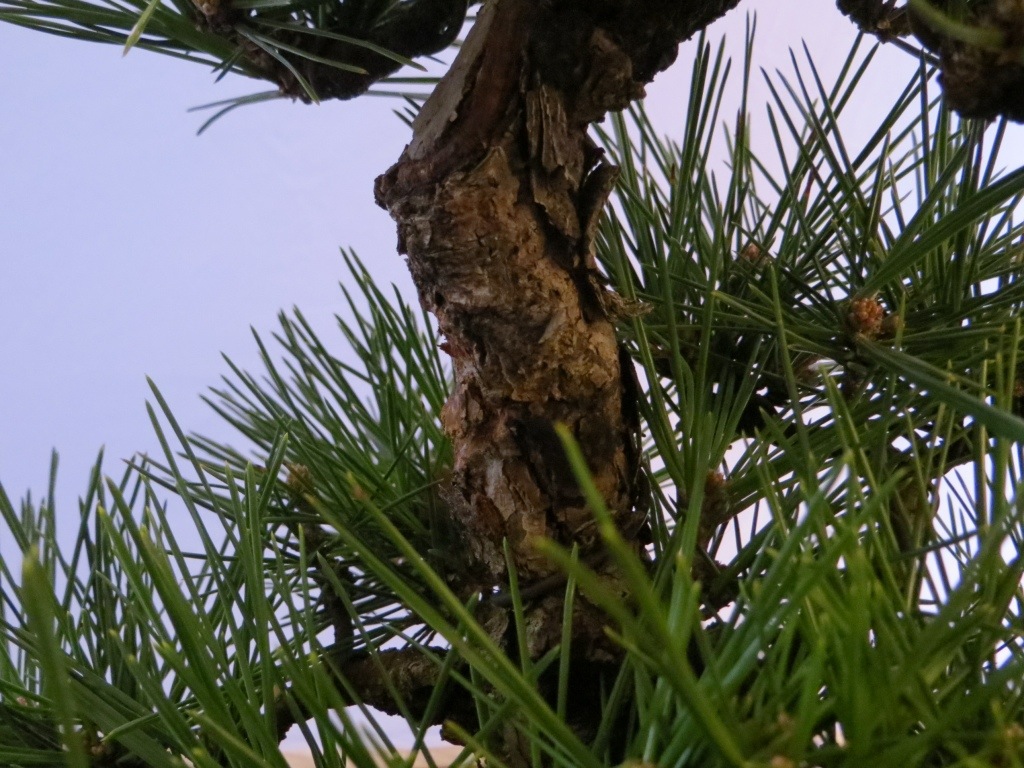

Good clean cut at the top, scrape down to wood in the center, and about 1.5 as long as the trunk is wide…hopefully it’s wide enough.
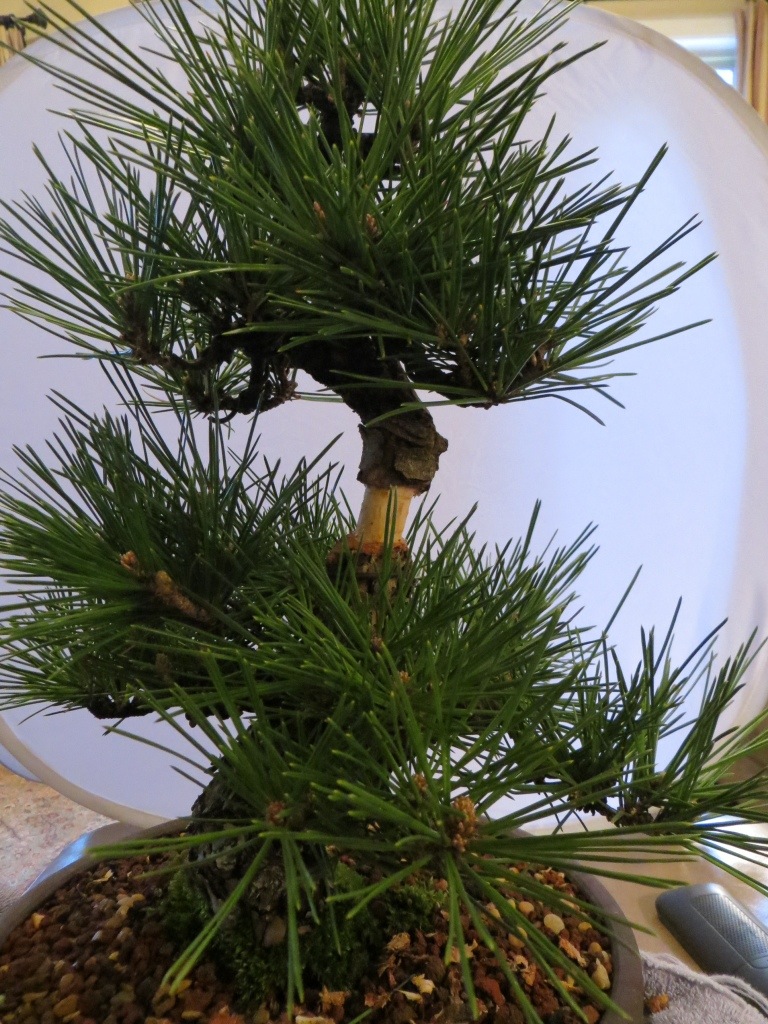
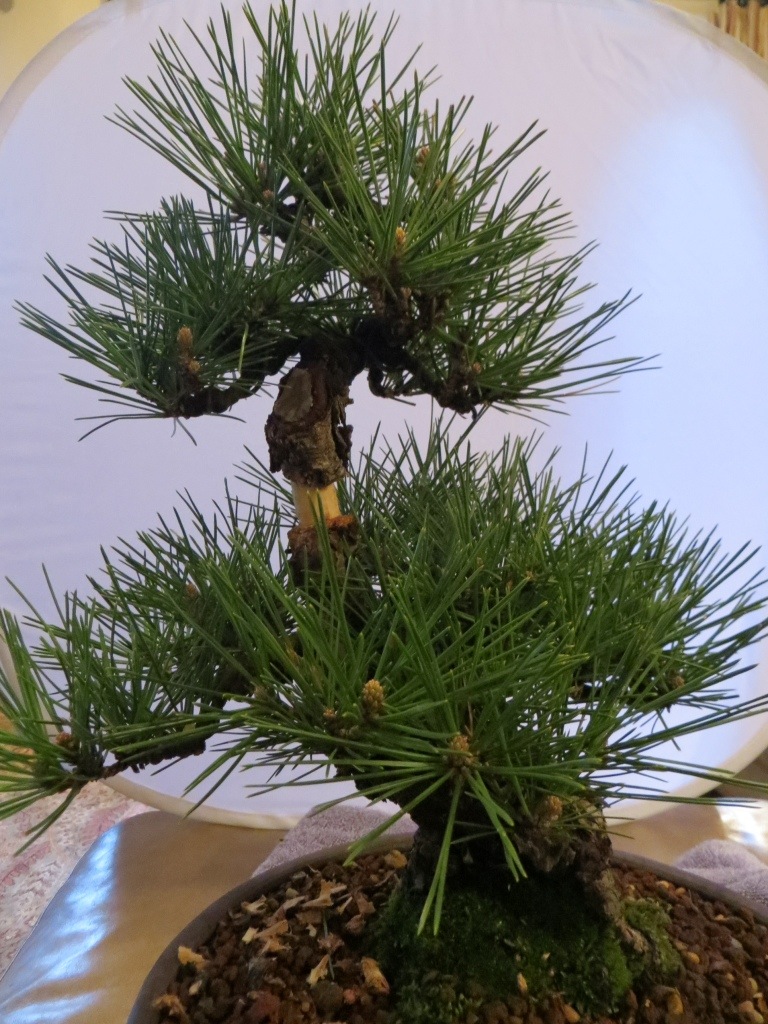
Combine akadama and chopped sphagnum moss, 1:1 as the rooting medium:
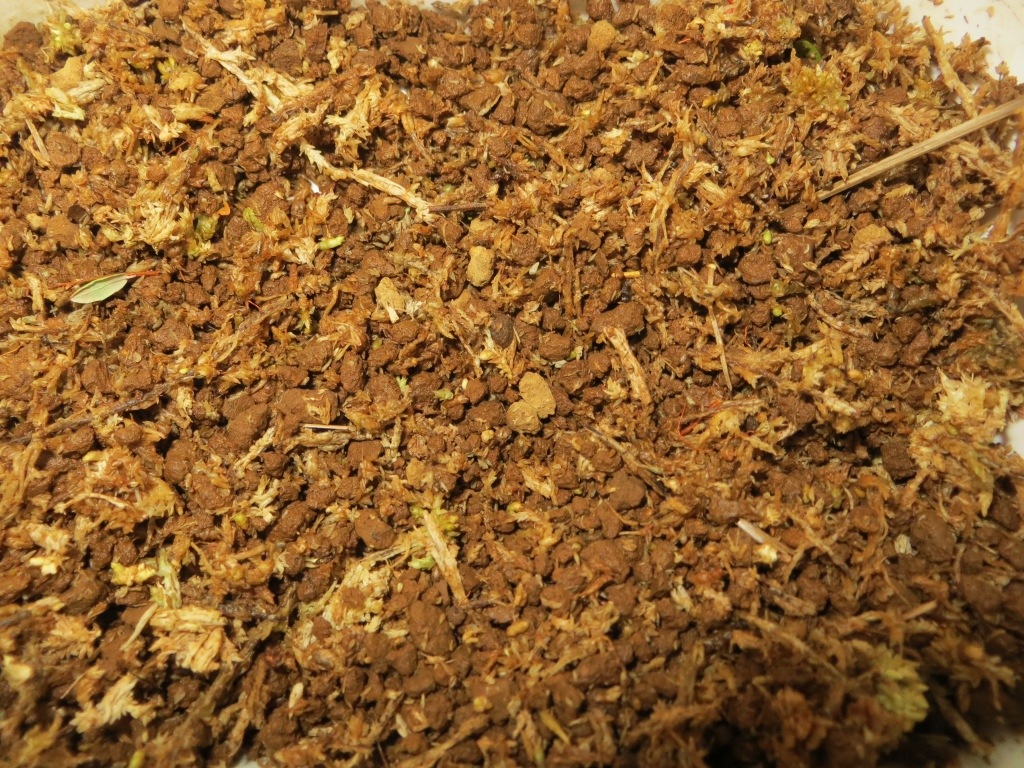
Apply Dip ‘n Gro at a 1:5 strength to the to the top:
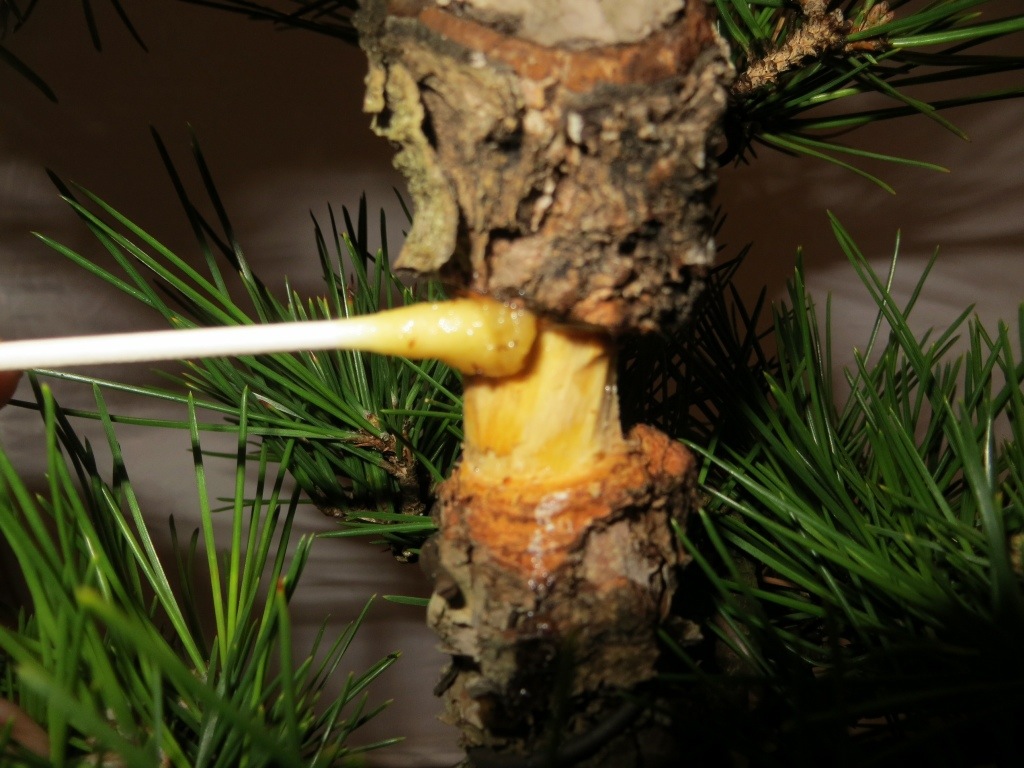
Attach a 4-oz plastic cup, with lots of perforations for drainage:
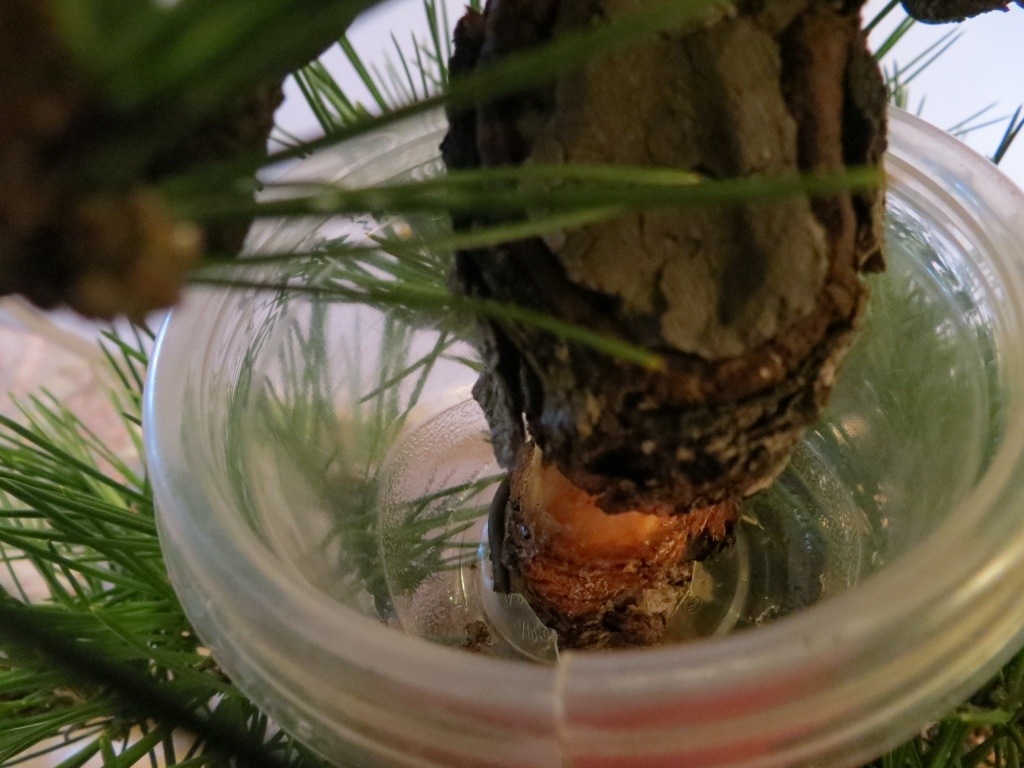
Filled it:

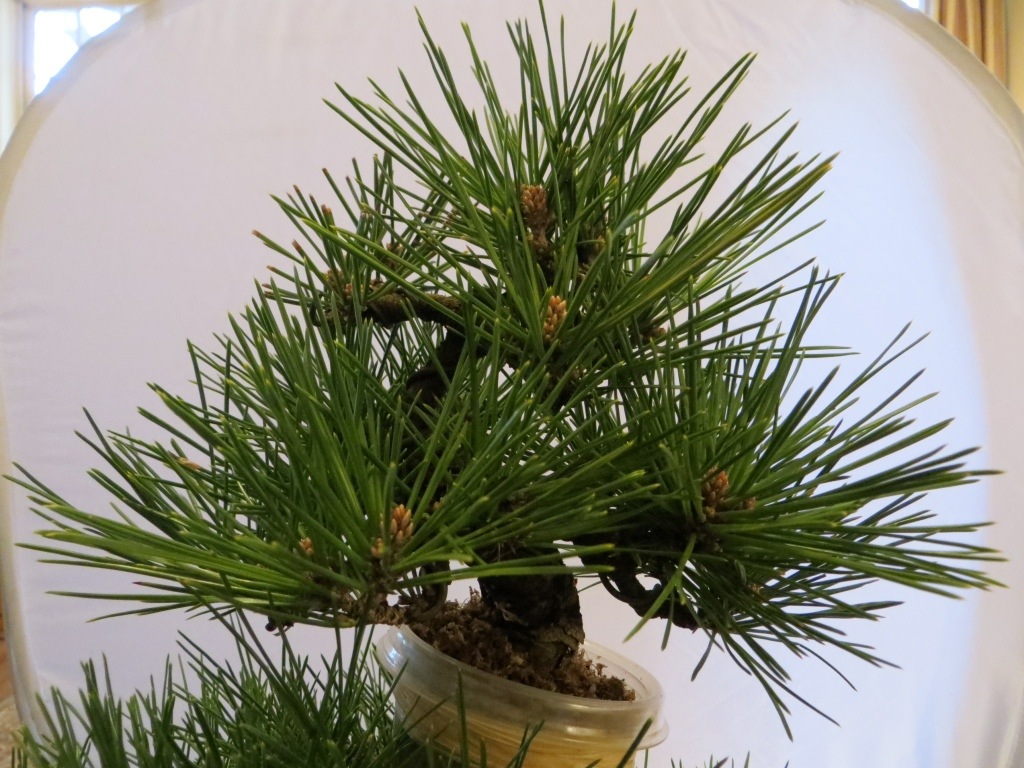
Water well, and the waiting begins…

Mid-summer ’13, and it’s still green. So it’s either healing over, or rooting. No roots are visible yet in the cup.
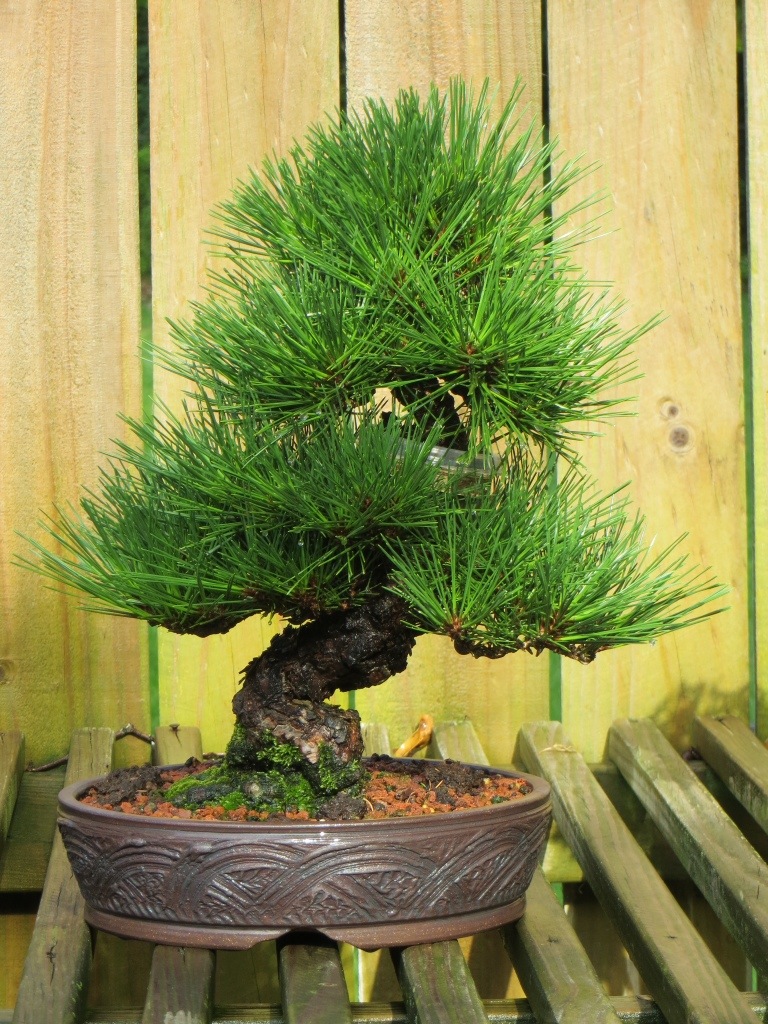
Fast forward to April ’14, the apex is happy, green and growing…so it’s either rooting or bridging the girdled trunk.
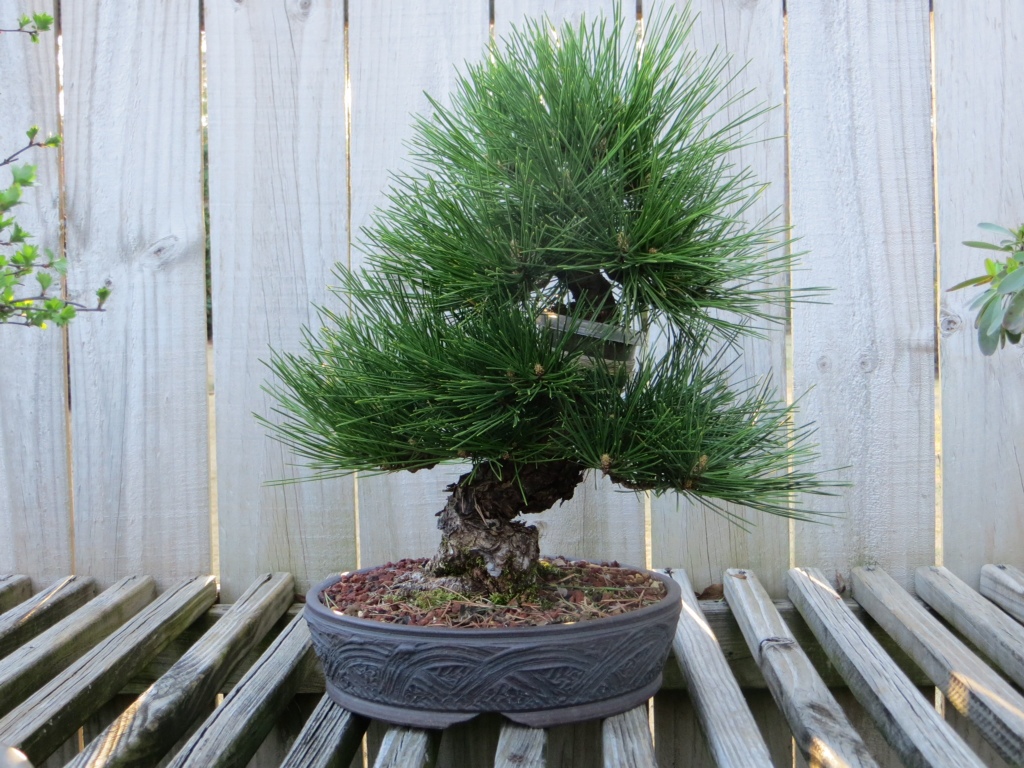
So, I started probing the soil with a chopstick, and unfortunately found no roots. The tree had bridged the girdled trunk and continued on:
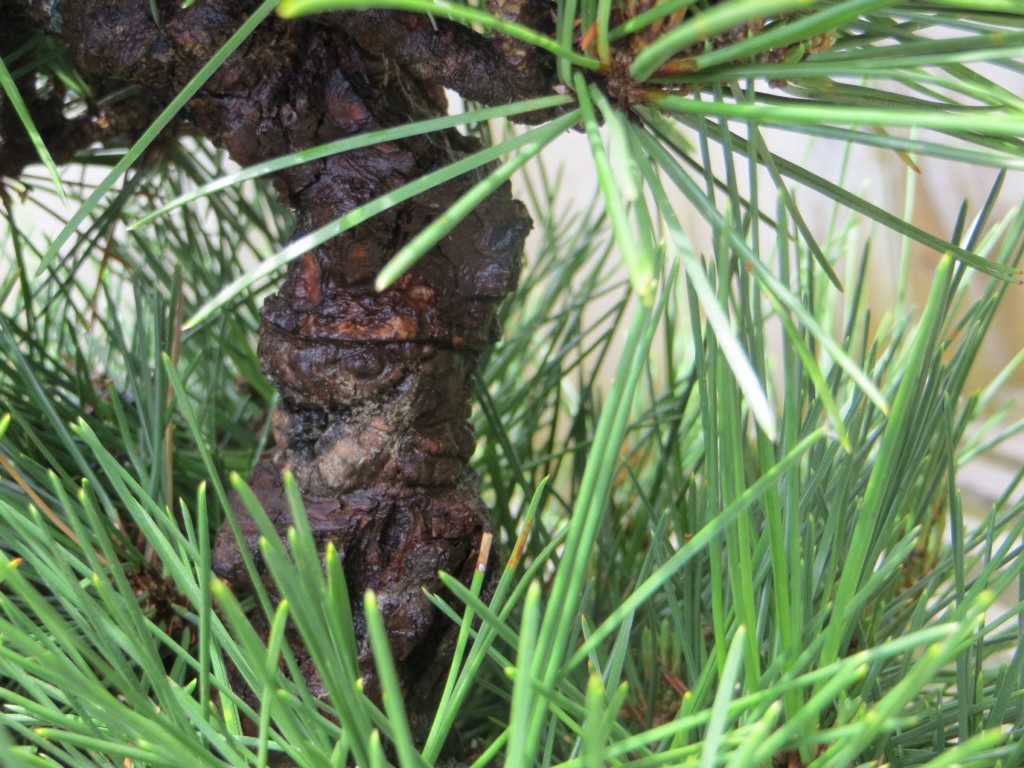
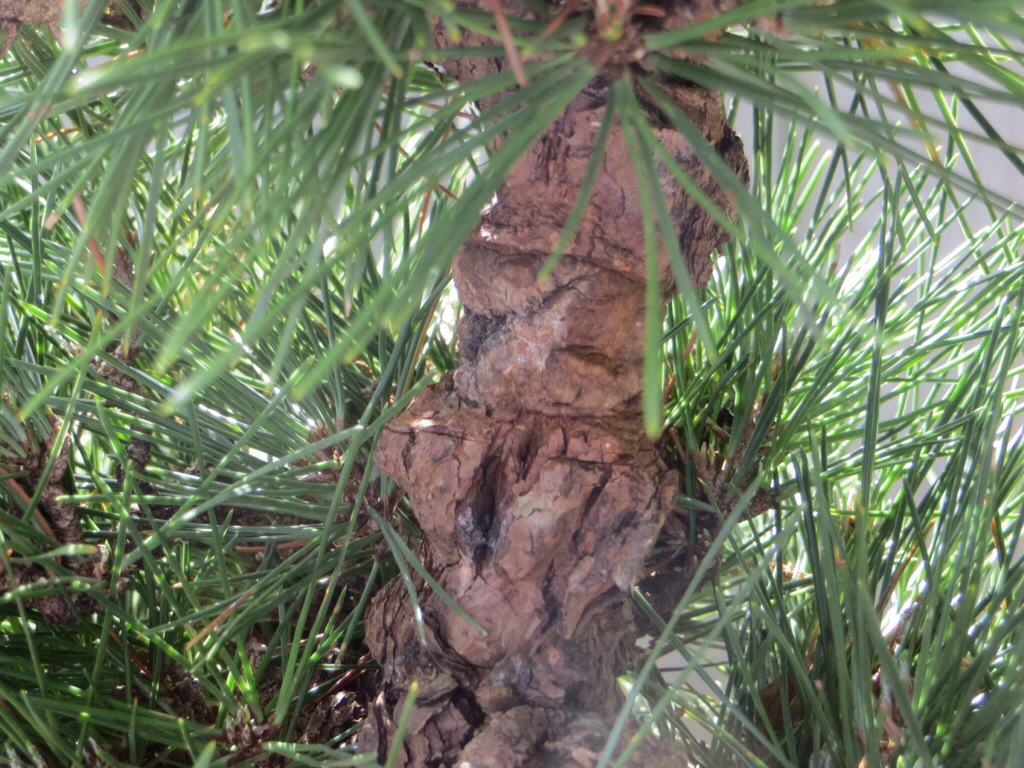
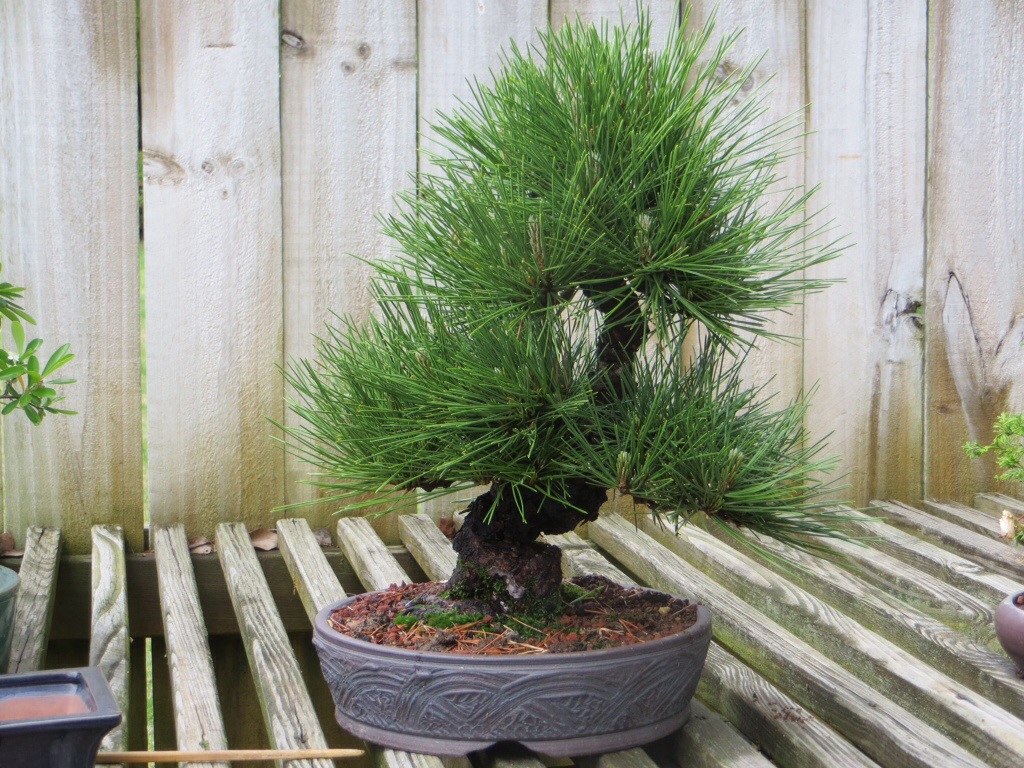
Next time, I’ll have to make the girdled portion wider, and even put a wire around the upper section to slow the bridging enough that roots are issued from the forming callus tissue.
